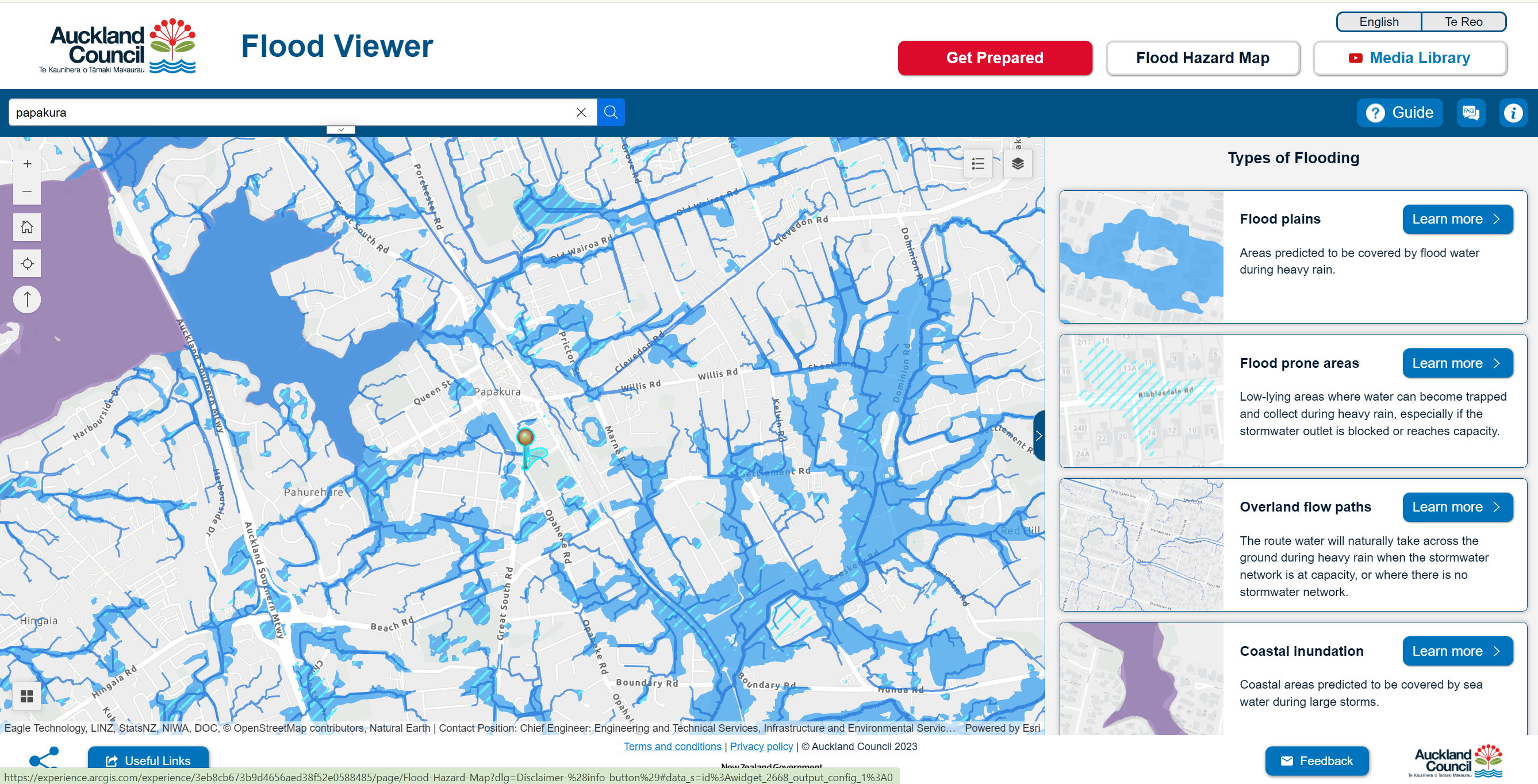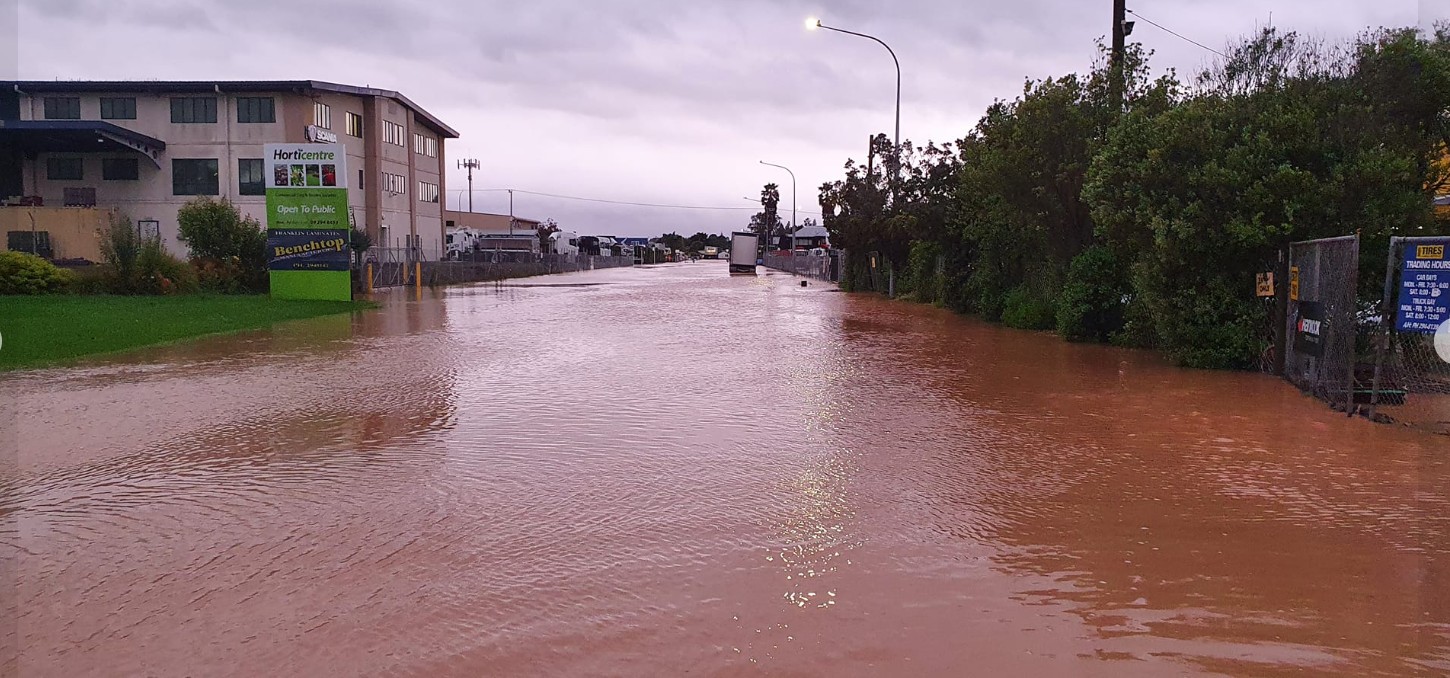If you live in Papakura, you probably remember exactly where you were during the January 2023 storms. The water came fast, and it came hard – leaving many of us dealing with flooded homes, businesses, and roads that turned into rivers.
But here’s the thing: Auckland Council isn’t just waiting for the next big storm to hit. They’ve launched a massive response called Making Space for Water – and right here in Papakura, you can already see it in action.
What exactly is Making Space for Water?
Think of it as Auckland’s $760 million, accelerated programme of work to reduce outsmart flooding. Instead of just building bigger drains (which would cost a fortune and still might not work), the programme is about giving water more places to go safely when the skies open up.
The goal is simple: reduce flood risks, make our stormwater systems stronger, and make sure we’re all better prepared for whatever weather comes our way.
Donna Carter, Senior Healthy Waters Specialist at Auckland Council, who recently spoke at a Resilient Papakura workshop, emphasized that the programme is about being smarter with flood management rather than just building bigger infrastructure.
What’s already happening in Papakura
You might not have noticed, but the programme is already working behind the scenes in our area. Here’s what’s going on:
Smart flood monitoring
Four ’hot-spot’ cameras are now keeping a 24/7 watch on Papakura’s streams and culverts. These cameras monitor water levels, flow rates, and debris blockages, alerting crews to take action as soon as possible. This early warning system helps contractors react more quickly to potential flooding hotspots.
More maintenance, more often
Remember how frustrated everyone got when drains stayed blocked for weeks? The programme has identified 10 “leafy roads” (including Beach Road and Ray Small Drive), 7 high-leaf areas, and 5 priority hotspots around Papakura that now get extra attention. Crews have also completed post-storm clearance work along Gatland Road and Slippery Creek.
The sobering numbers
2015 modelling shows that up to 227 homes and businesses in the Papakura Stream floodplain could be flooded in a major storm (what engineers call a “1-in-100-year event which means it has a 1% chance of happening in any given year ).
Some earlier flood maps use modelling based on a 2.1°C climate change over 100 years, while more recent maps are based on NIWA’s latest climate predictions which have an expected temperature rise of 3.8 degrees. While that’s not meant to scare you, it does help Council figure out where to focus their efforts.
You can watch a video that explains more about flood modelling here.
What Papakura locals told Council (and how they responded)
At the recent workshop, Papakura residents didn’t hold back. Here’s what people said and how Council staff responded:
“Why does it take 40 days to clear leaves from gutters?” One resident was told they’d have to wait over a month for Auckland Transport to sweep blocked gutters. Council acknowledged this is frustrating and explained that while Healthy Waters clears public stormwater assets within 10 working days, road-sweeping is Auckland Transport’s responsibility. For this reason, Healthy Waters is currently exploring taking over road sweeping responsibilities. Council representatives are working closely with Auckland Transport to align this detail. The takeaway? Keep logging those requests – they do make a difference.
“Our insurance costs have gone through the roof!” Several people said their premiums have “shot up” since the floods. Council staff were honest about this – global insurance costs are rising everywhere to cover the cost of climate change impacts. But they offered practical advice: shop around with different insurers, request property-specific flood-depth data from Council and / or seek an independent professional assessment to negotiate independent assessments with insurers.
“What about renters who don’t get flood information?” Great question. If you’re renting and your property manager isn’t sharing flood-risk information, you’re not alone. The best way for renters to get information about their flood-risk is to go to Flood Viewer, which is a free tool anyone can use to find the flood risk at any address. As well as maps, Flood Viewer has a library of videos and guides on what to do before, during and after a flood event as well as FAQs. Council is running advertising campaigns to increase the awareness of Flood Viewer among renters.
“Why are people still building in flood zones?” This one gets asked a lot. Council reminded the group that new flood modelling data is now feeding into all consenting decisions, and new developments must now comply with flood-resilient design standards, including higher habitable floor levels and freeboard requirements.

Donna Carter, Senior Healthy Waters Specialist at Auckland Council, emphasized that Making Space for Water is about being smarter with flood management rather than just building bigger infrastructure.
How you can help (and protect yourself)
Everyone has a role in managing stormwater and reducing flood risk – starting at home.
Your responsibilities
If you own a property, you’re responsible for maintaining all stormwater devices on your land that connect to the public network, including:
- Gutters, downpipes, drains, and catchpits
- Rainwater tanks – ensure they’re properly installed, secure, and have the right overflow connections
For maintenance or repairs, contact a plumber or drainlayer. If you’re renting the property, contact your property manager or landlord.
Simple prevention tips
- Clear leaves from driveway drains and kerb grates
- Make sure fences allow water to flow through or under
- Check downpipes are properly connected – not discharging onto lawns or driveways
- Clear leaf debris from gutters and catchpits twice a year
- Consider flood-resilient landscaping like rain gardens or raised garden beds
Reporting stormwater issues
If flooding is happening now (e.g. water threatening homes, surcharging manholes, or blocked public drains):
- Call Auckland Council on 09 301 0101 and press * for emergencies – available 24/7. A contractor will usually respond within 2–4 hours.
For non-urgent stormwater issues (e.g. slow drainage, recurring blockages):
- Call the same number 09 301 0101
- Or use the “Report a Problem” form at aucklandcouncil.govt.nz
Your request will be reviewed and followed up within 1–3 working days, with a site visit organised if needed.
Make your report count
- Include photos or short videos of the issue
- Report repeat issues – they help identify hotspots
- Leave your contact number if possible, so engineers can follow up
Who does what?
- You (homeowner/occupier): Maintain private drains and stormwater systems
- Healthy Waters (Council): Public stormwater infrastructure (sometimes this infrastructure can run under private property)
- Auckland Transport: Kerbside sweeping and managing leaf litter
- Community Facilities: Stormwater systems in parks
- For other roles and responsibilities visit council’s website: How to report flooding or flood risks
Stay informed
- Check your flood risk: aucklandcouncil.govt.nz/floodviewer
- General questions: [email protected]
- Updates: Visit the Auckland Emergency Management website and follow them on social media for severe weather alerts
Future workshops: Keep an eye out for more Resilient Papakura community workshops – they’re your chance to ask questions directly and help shape local flood management priorities

The bottom line
Making Space for Water isn’t just another Council programme that disappears after a year. It’s a long-term commitment with serious money behind it, and you can already see it working in Papakura through better maintenance and smarter monitoring alongside some innovative park designs with the local board.
But here’s the real truth: Council can’t do this alone. The programme works best when residents like you stay engaged, report problems quickly, and take simple steps to protect your own property.
The next big storm will come – that’s a given. The question is whether we’ll be ready for it. Based on what’s happening in Papakura right now, the answer is looking more and more like “yes.”
Got questions about flooding in your area? Email [email protected] or check out the Flood Viewer at aucklandcouncil.govt.nz/floodviewer.





0 Comments